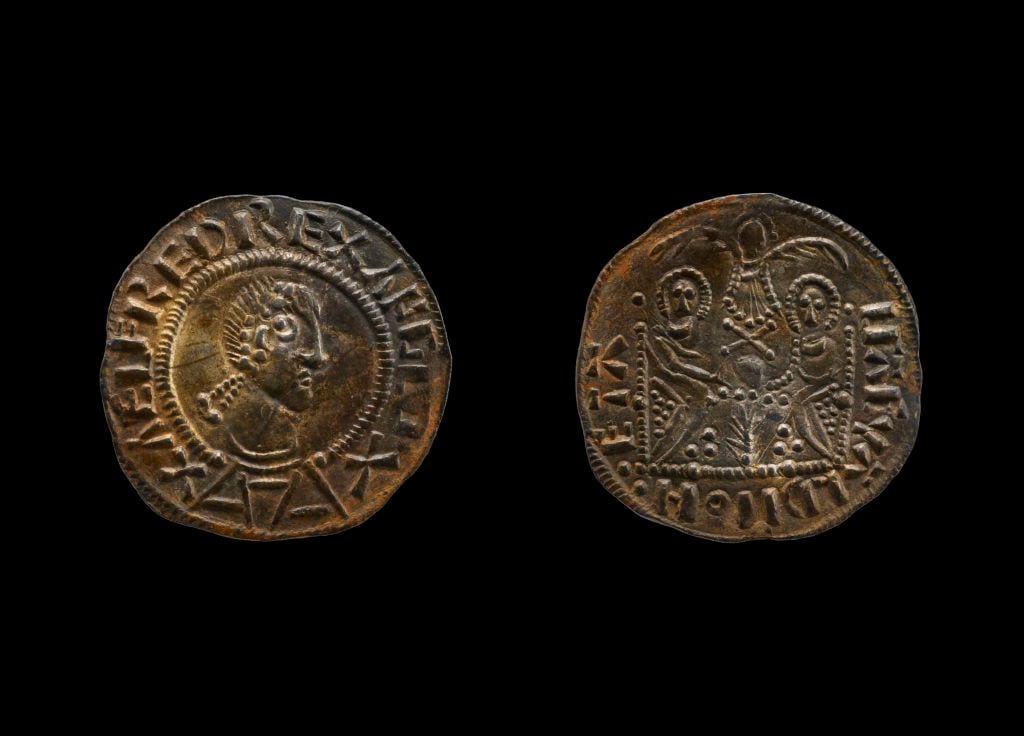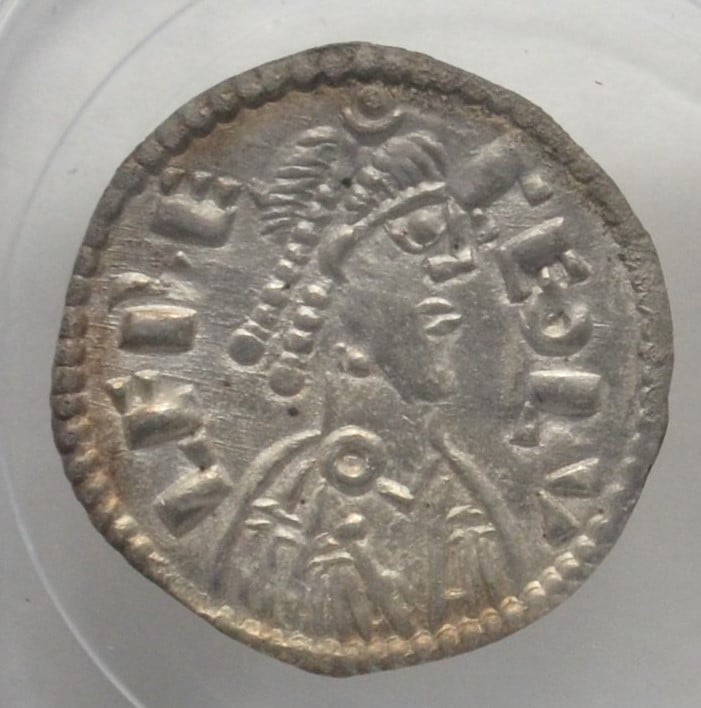Crime
A U.K. Court Has Found Two Collectors Guilty of an Illegal Scheme to Sell a $960,000 Hoard of Anglo-Saxon Coins
The coins belong to the Heresfordshire hoard and were never reported, violating the U.K.'s Treasure Act.

The coins belong to the Heresfordshire hoard and were never reported, violating the U.K.'s Treasure Act.

Richard Whiddington

Two men who devised a scheme to illegally sell 9th-century Anglo-Saxon coins to private collectors have been found guilty of possession of criminal property and conspiracy to convert criminal property by Durham Crown Court, England.
Craig Best, 46, and Roger Pilling, 75, were in the process of trying to sell a hoard of 44 coins worth an estimated $960,000 in 2019 when they were hit by a sting operation involving the three branches of U.K. police. Best had attempted to sell the coins to a U.S.-based academic whose skepticism prompted him to contact a U.K.-based expert who passed the information to the Durham Constabulary.
Best and Pilling face potentially long sentences in prison with judge James Adkin telling the men, “you have both been convicted of what I consider to be compelling evidence of serious criminality in relation to these artifacts.” Given the rareness of the case, Adkin has postponed sentencing until May 4. Both men have been remanded in custody.

One of the coins found at Roger Pilling’s home address. Photo: courtesy of Durham Constabulary.
The coins belong to the Herefordshire hoard, a collection of around 300 coins and jewelry dating from the Viking period that was discovered by two metal detectorists, George Powell and Layton Davies, in 2015. It is believed to be worth in excess of $3 million. Rather than declaring the treasure, as compelled by the U.K’s 1996 Treasure Act, the men sold the hoard piecemeal to collectors. In 2019, Powell and Davies were sentenced to 10 and eight years in prison respectively (later reduced to six and five years on appeal).
The Anglo-Saxon coins seized from Best and Pilling have been turned over to the British Museum, which is researching the objects to better understand the state of politics in the 9th century, a period of intermittent conflict between the Anglo-Saxons and the Vikings. Of particular note is the relationship between Alfred the Great of Wessex and Ceolwulf II of Mercia.

A coin found at Roger Pilling’s home address. Photo: courtesy of Durham Constabulary.
Ceolwulf had long been considered a mere puppet of the Vikings rather than a king, but two of the coins seized from Best and Pilling tell a different story, one of collaboration. The pair of two-headed coins show Alfred on one side and Ceolwulf on the other.
“The coins show beyond any possible doubt that there was a political and economic alliance between Alfred and Ceolwulf II,” said Gareth Williams, the British Museum’s curator of early medieval coins and Viking collections. “The coins in this case have already begun to transform our knowledge and understanding of the political situation of the late 9th century.”
Experts at the British Museum believe the coins may be connected to a Viking army that was defeated by King Alfred in 878, given its location matches that of the Herefordshire hoard.